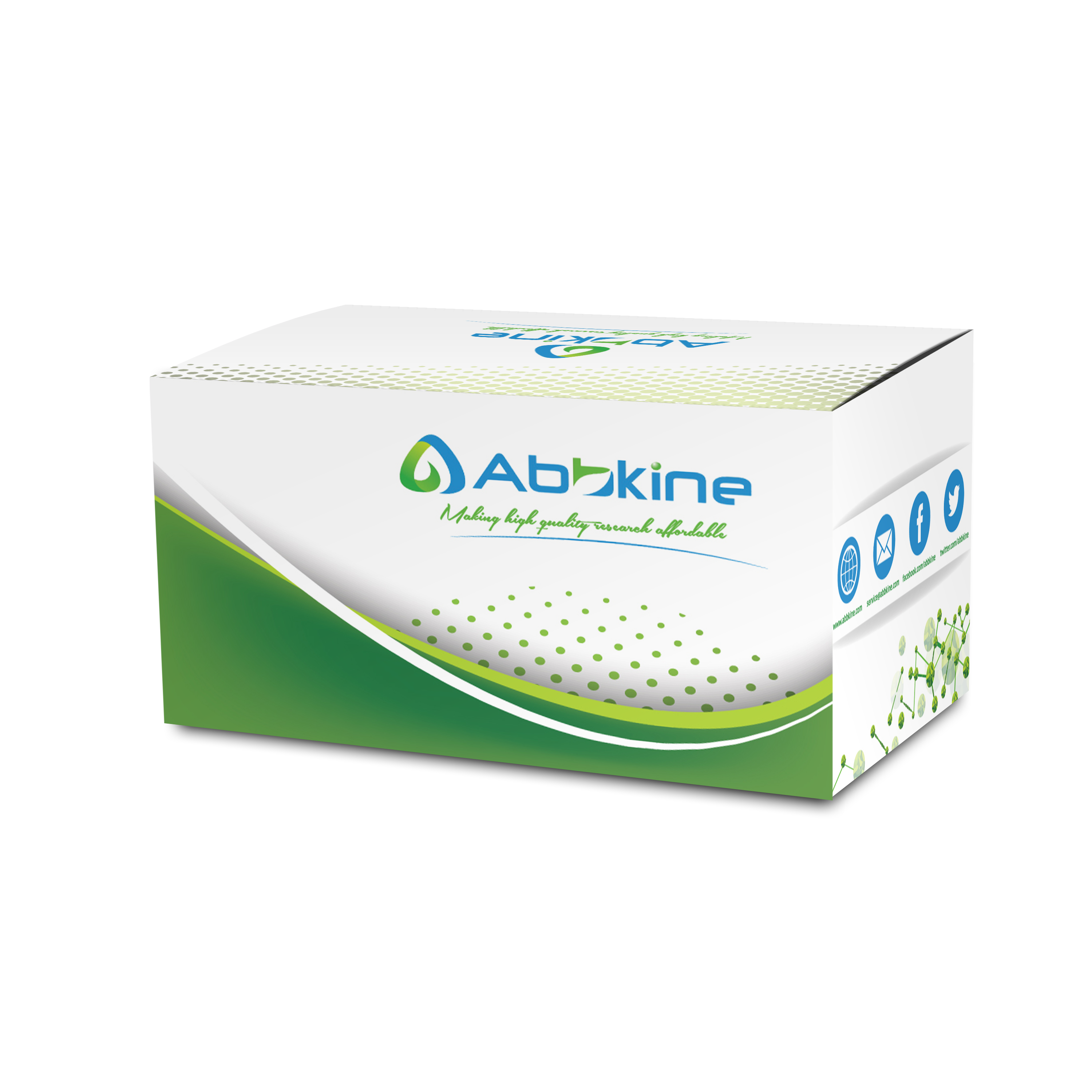| Product name | CheKine™ Micro Mitochondrial complex Ⅲ Activity Assay Kit |
| Applications notes | Abbkine CheKine™ Micro Mitochondrial Complex Ⅲ Activity Detection Kitis specially developed for the detection of complex I activity. The operation is simple and convenient, and the detection is more sensitive and accurate. Complex III could transfer the hydrogen from reduced CoQ to cytochrome C to produce reduced cytochrome C. Unlike oxidized cytochrome C, reduced cytochrome C has characteristic light absorption at 550 nm. So, the increasing of light absorption rate can reflect the activity of Complex III enzymes, and Abbkine CheKine™ Micro Mitochondrial complex Ⅲ Activity Assay Kit can detect animal and plant tissues and cell samples. |
| Kit components | • ReagentⅠ • Reagent Ⅱ • Reagent Ⅲ • Reagent Ⅳ • Reagent Ⅴ • Reagent Ⅵ |
| Features & Benefits | • Detect the enzyme activity of complex III in plant tissues, animal tissues, and cell samples. • Provides detailed sample preparation and results calculation methods. |
| Usage notes | • Do not mix the components between different batch numbers and manufacturers; otherwise, the results may be abnormal. • Avoid bubbles while mixing or redissolving components. • Change pipette tips frequently to avoid cross contamination between components. • Ensure that all components and equipment are at the proper temperature before starting the experiment. • In order to guarantee the accuracy of experimental results, need to do a pre-experiment with 1-2 samples. If the absorbance values is too high (above 1), the samples should be diluted with ReagentⅡand then measured again . Pay attention to multiply by the dilution factor when calculating the result. • The protein concentration of the sample needs to be determined by users. •Note that Reagent Ⅲ has certain toxicity, Please take protective measures during operation. |
| Storage instructions | The kit is valid for 6 months. Please refer to the table below Materials supplied and Storage conditions to store all the components. |
| Shipping | Gel pack with blue ice. |
| Precautions | The product listed herein is for research use only and is not intended for use in human or clinical diagnosis. Suggested applications of our products are not recommendations to use our products in violation of any patent or as a license. We cannot be responsible for patent infringements or other violations that may occur with the use of this product. |
| Background | Mitochondrial respiratory chain complex III (EC 1.10.2.2), also known as CoQ-cytochrome C reductase, is widely present in the mitochondria of animals, plants, microorganisms and cultured cells. It plays a key role at the main and branch pathways in the mitochondrial respiratory electron transport chain. Complex III could transfer the hydrogen of the reduced CoQ to cytochrome C ,and produce reduced cytochrome C. |

Fig.CheKine™ Micro Mitochondrial complex Ⅲ Activity Assay Kit
Yes,It can be crushed by ultrasonic.The reference ultrasonic conditions are as follows: ice bath ultrasonication for 5 min (power 20%, ultrasonication for 3 s, interval of 7 s, repeated 30 times).
Store the supernatant and pellet together at -80°C, pay attention to aliquoting and avoid repeated freezing and thawing. It is recommended to use fresh samples for experiments whenever possible.
Complex III could transfer the hydrogen from reduced CoQ to cytochrome C to produce reduced cytochrome C. Unlike oxidized cytochrome C, reduced cytochrome C has characteristic light absorption at 550 nm. So, the increasing of light absorption rate can reflect the activity of Complex III enzymes
Author:Zhang, Yong, et al. Publication name:Nucleic Acids Research IF:16.6
Author:Zhang, Jiangnan, et al. Publication name: Cell Reports Medicine IF:14.3
Author:Liu, Yingxin, et al. Publication name:Environment International IF:11.8
Author:Shan, Xiao, et al. Publication name: Redox Biology IF:10.7
Author:Duan, Caihan, et al. Publication name:Research IF:8.5
Author:Du, Mengran, et al. Publication name:Clinical and Translational Medicine IF:7.9
Author:Liu, Yuqiang, et al. Publication name:Journal of Translational Medicine IF:7.4
Author:Tu P, Pan Y, Wang L Publication name:Biomaterials Research IF:6.70
Author:S Huo, Q Wang, W Shi, L Peng, Y Jiang, M Zhu Publication name:International Journal of Molecular Sciences IF:6.208
Author:Kang, Jin-Wen, et al. Publication name: Cellular and Molecular Life Sciences IF:6.2
Author:Gong, Qiu-yuan, et al. Publication name: Mitochondrion IF:3.9
Author:Wang, Huan, et al. Publication name:Biology of Reproduction IF:3.1
You must be logged in to post a review.
Reviews
There are no reviews yet.